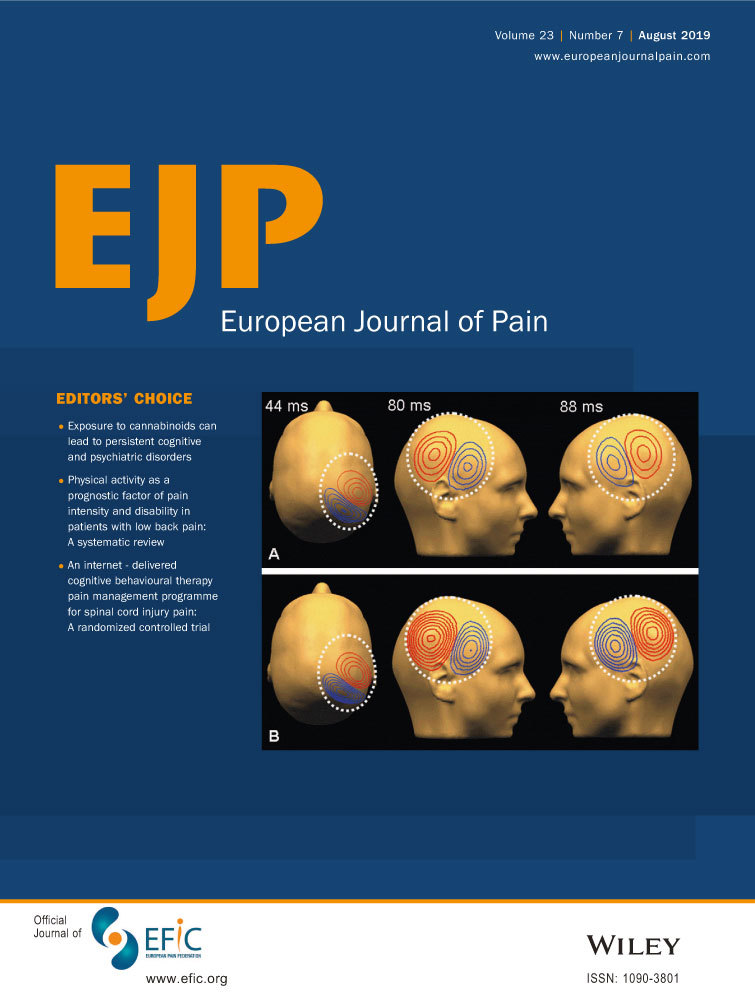Conditioning pain modulation reduces pain only during the first stimulation of the temporal summation of pain paradigm in healthy participants
Funding information
Center for Neuroplasticity and Pain (CNAP) is supported by the Danish National Research Foundation (DNRF121). Further, Shionogi Science Program and Daiichi Sankyo TaNeDS Europe supported this study.
Abstract
Background
Pro-nociceptive and anti-nociceptive mechanisms are commonly assessed in clinical and experimental pain studies, but their potential interaction is not well understood.
Objectives
Investigate the effect of conditioning pain modulation (CPM) on temporal summation of pain (TSP).
Methods
Twenty healthy participants underwent cuff algometry assessment on the lower legs to establish the pressure pain tolerance threshold (PTT). For the TSP assessment, ten stimuli at the level of the PTT were delivered by computerised cuff inflations (1-s stimulation, 1-s break) while participants rated pain intensity on a 10-cm electronic visual analogue scale (VAS). This TSP paradigm was then repeated with a simultaneous conditioning stimulus induced by a cuff on the contralateral leg, inflated to a constant pressure corresponding to 30% (mild), 70% (moderate) or 100% (severe) of the PTT. These were assessed in a randomised order, with a fifteen-minute break between tests. A final TSP test without conditioning was reassessed at the end (post-recording).
Results
An interaction between stimuli (1–10) and repetition (p < 0.05) was found for VAS scores. VAS scores for the first stimulus were decreased during 30%, 70%, and 100% conditioning intensities, compared to baseline and post-recordings (p < 0.05). There was a significant increase in TSP during conditioning (p < 0.05). There were no significant differences between baseline and post-recordings for any stimuli (p > 0.05).
Conclusions
The current study indicates that mild to severe stimuli administered by cuff algometry does not modulate summation effect of temporal summation of pain, which could indicate that pain facilitatory mechanisms are more potent compared with pain inhibitory mechanisms.
Significance
Current knowledge on the interaction effect of pro and anti-nociceptive paradigms are the lacking. The current study indicates that conditioning pain modulation does not modulate the summation effect of temporal summation of pain, when evaluated by computerized pressure algometry. This finding was independent of the mild, moderate and severe painful conditioning intensities.
CONFLICTS OF INTEREST
Nocitech is partly owned by Aalborg University.




